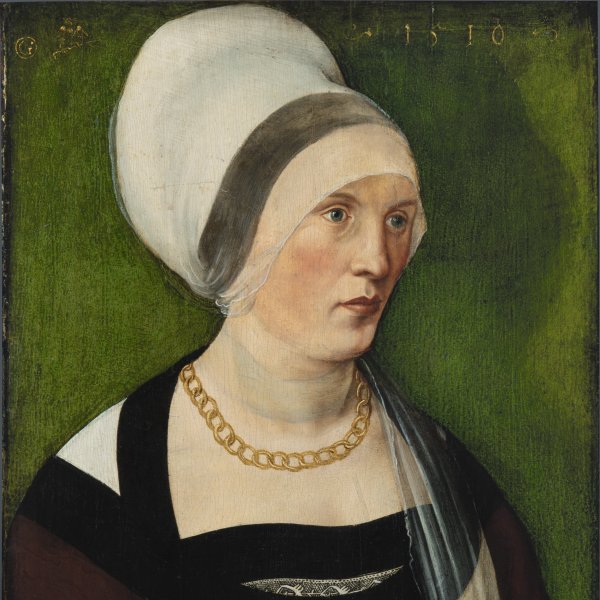Wolf Traut
Nuremberg ca. 1485-1520
Traut was a German painter and draughtsman working in the circle of Dürer. According to the biographer Johann Neudörfer, Traut was the son of the painter Hans Traut, a native of Speyer but active in Nuremberg from 1491. No documentation has survived with regard to his training but he probably began his studies with his father. Around 1505 he was in Dürer’s workshop, having probably completed his training, and together with Hans Baldung Grien and Hans Schäufelein he was involved in the design of prints to illustrate Ulrich Pinder’s book Der beschlossen Gart des Rosenkrantz Marie. By about 1511 Traut was working as an independent master on the altarpiece for the high altar of the Johanneskirche in Nuremberg (in situ), a work that reveals the marked influence of the prints of Dürer and Martin Schongauer. Over the following years and for the same church he painted Saint Barbara and Saint John the Evangelist (both Germanisches Museum, Nuremberg). Traut was also involved in the redecoration of the church at Heilsbronn, executing the altarpiece of The Eleven Thousand Virgins in 1513. Traut’s most important work, The Holy Kinship Altarpiece, was painted in 1514 for the Tuchmacherkapelle in Nuremberg (Bayerisches Nationalmuseum, Munich). It is notable for its brilliant colouring reminiscent of Dürer and its original frame in the form of a triple arch with profuse decoration of an Italianate type.
In addition to his altarpieces, Traut continued to produce designs for books associated with Dürer’s studio and in 1515 collaborated with that artist on the major graphic project of The Triumphal Arch for the Emperor Maximilian. His death in 1520 prevented him from undertaking the important commission that he had received from Cardinal Albrecht of Brandenburg for woodcuts of the treasures in the Stiftskirche in Halle an der Saale.
In addition to his altarpieces, Traut continued to produce designs for books associated with Dürer’s studio and in 1515 collaborated with that artist on the major graphic project of The Triumphal Arch for the Emperor Maximilian. His death in 1520 prevented him from undertaking the important commission that he had received from Cardinal Albrecht of Brandenburg for woodcuts of the treasures in the Stiftskirche in Halle an der Saale.





